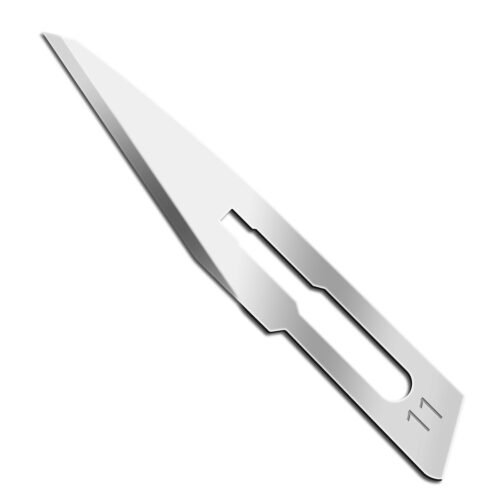Medical scalpel blades are among the most essential tools in surgery and healthcare. Designed for precision, these blades come in various shapes, sizes, and materials to suit a wide range of medical applications. Medical scalpels are indispensable tools in modern medicine. From their diverse designs to their vital applications, understanding their nuances ensures better outcomes for both surgeons and patients.
What Are Medical Scalpel Blades?
Medical scalpel blades are the cutting components of surgical scalpels, used for making incisions in tissue. They are known for their sharp edges and are designed to minimize tissue damage during procedures. Scalpel blades can be disposable or reusable, depending on the material and application.
The Anatomy of a Scalpel Blade
Every scalpel blade has a specific structure that contributes to its functionality. Key parts include:
Cutting Edge: The sharp side of the blade that makes the incision.
Spine: The non-cutting side of the blade that provides support.
Point: The tip of the blade, used for precision punctures or cuts.
Slot: The area where the blade attaches to the scalpel handle.
Materials Used in Scalpel Blades
Scalpel blades are crafted from materials that ensure sharpness, durability, and sterility. Common materials include:
Stainless Steel: Resistant to corrosion and suitable for sterilization.
Carbon Steel: Extremely sharp but requires careful handling to prevent rust.
Ceramic: Lightweight and sharp but brittle and less common in medical use.
Types of Scalpel Blades
Scalpel blades come in a variety of shapes and sizes, each designed for specific surgical tasks. Some of the most commonly used types include:
a. No. 10 Blade
Features: Large, curved cutting edge.
Applications: Used for large, straight incisions in soft tissue.
b. No. 11 Blade
Features: Straight edge with a sharp, pointed tip.
Applications: Ideal for puncture incisions and precise cutting in procedures like laparoscopic surgery.
c. No. 12 Blade
Features: Small, curved edge resembling a hook.
Applications: Commonly used in ENT and oral surgeries.
d. No. 15 Blade
Features: Smaller version of the No. 10 blade.
Applications: Perfect for intricate and delicate incisions in plastic surgery and dermatology.
Disposable vs. Reusable Scalpel Blades
Disposable Scalpel Blades
Designed for single use to minimize contamination risks.
Commonly used in emergency or outpatient settings.
Reusable Scalpel Blades
Can be sterilized and reused multiple times.
Cost-effective and environmentally friendly, often used in hospitals with robust sterilization protocols.
Applications of Scalpel Blades
Scalpel blades are versatile and used across multiple medical disciplines, such as:
General Surgery: For making large incisions or cutting through soft tissue.
Plastic and Reconstructive Surgery: Used for precise and intricate incisions.
Ophthalmology: Specialized blades for delicate eye surgeries.
Autopsies and Biopsies: For tissue sampling and detailed dissections.
Veterinary Surgery: Used for animal surgeries and procedures.
Choosing the Right Scalpel Blade
Selecting the correct scalpel blade is critical for achieving optimal surgical outcomes. Factors to consider include:
Type of Procedure: Different blades are suited to specific tasks, such as cutting, puncturing, or hooking.
Tissue Characteristics: Certain blades perform better on soft tissue, while others are ideal for tougher material.
Surgeon’s Preference: Familiarity and comfort with specific blade types often influence choice.
Handling and Safety Tips for Scalpel Blades
Scalpel blades are extremely sharp and must be handled with care to avoid accidents. Follow these safety guidelines:
Attach and Detach Safely: Always use a blade remover or forceps to handle the blade.
Dispose Properly: Place used blades in designated sharps containers.
Maintain Sterility: Ensure reusable blades are properly sterilized to prevent infection.
Store Securely: Keep unused blades in a safe, dry place to maintain their integrity.
Innovations in Scalpel Blades
Recent advancements have improved the efficiency and safety of scalpel blades. Innovations include:
- Non-Stick Coatings: Prevent the accumulation of tissue or fluids on the blade.
- Laser Scalpel Blades: Provide extreme precision and minimize bleeding.
- Antimicrobial Coatings: Reduce the risk of infection during surgeries.
Importance of Quality in Scalpel Blades
High-quality scalpel blades ensure precision, minimize tissue trauma, and reduce the risk of complications. Inferior blades can result in uneven cuts, excessive bleeding, and poor surgical outcomes.
At Greymedical, we understand the importance of reliable surgical tools. Our scalpel blades are crafted with premium materials and meticulous attention to detail, making them the preferred choice for medical professionals worldwide.
Conclusion
Medical scalpel blades are vital tools in healthcare, offering precision and versatility in countless medical applications. Understanding their types, materials, and safe handling practices ensures optimal results and patient care.





Comments